Rob Stallard led a well-attended walk through the woods to the west of the Little Heath area of Tilehurst on the afternoon of Saturday 29 April. Members gathered at the top of Pincents Lane, where Rob gave an overview of the local geology. The plateau at the top is very stony, with gravels laid down by the outwash from ice-age glaciers. Below is London Clay, laid down about 50 million years ago. Below the Clay are the Lambeth beds, layers of Sands and Clays laid down in estuarine conditions about 55 million years ago. Below the Lambeth Beds is the Chalk, laid down about 85 million years ago. The walk started off south-westwards along a footpath across two grassy pastures. Flowers seen beside the path included abundant Dandelions, Greater Celandine, Dove’s-foot Crane’s-bill, Lesser Celandine and Red and White Dead-nettle. The egg of an Orange-tip butterfly was found on a flower-head of Garlic Mustard. The path passed through a gate, then dropped steeply down through the woodland of Harefield Copse. It was peak Bluebell time and the woods were a sea of blue as far as the eye could see. Several members commented on the sweet scent of the flowers. Rob explained that British woodlands are home to almost 50% of the global Bluebell population. They spread very slowly and cannot tolerate trampling or grazing. He explained how woodland plants have to develop strategies to flower and set seed before the tree canopy blocks out light and their roots take up the moisture. As insects may not be around early in the year some plants use self-pollination. It appears from the age of the trees that the woodland was clear felled during World War II. There was a brief diversion along a path which led down to the left through the Bluebells. In amongst the Bluebell leaves were the feathery leaves of Pignut, and a few flower heads were beginning to form. There were also a few Wood Anemone flowers. A Crab Apple tree was covered in pink blossom. The walkers retraced their steps, then followed another path down through the Bluebells. The pale green flowers of Moschatel were found where the path crossed a damper Clay layer and Southern Wood-rush was also seen.
At the bottom of the woods, the path emerged onto a small area of grassland, then out into arable farmland. The stream which had been running down the path through the woods vanished as the underlying geology changed from Clay to Chalk. There were distant views to the south across the valley of the Kennet and on to the North Wessex Downs, with the mast at Hannington showing prominently on the skyline. To the north was the line of the Pang valley. Rob explained that the valley was too wide and steep-sided to have been carved out by the small River Pang and even smaller Sulham Brook. Instead, it had been shaped by the Kennet, which formerly joined the Thames at Pangbourne. The route led past Nunhide Tower, a folly which overlooks the valley, and back into the bottom of the woods. A brief diversion led to clumps of the delicate Wood Mellick grass. A Wild Cherry tree had fallen across the path. Further on, several Wych Elms were coming into leaf. They both had distinctive twiggy Witches’ Brooms. Plants seen here included Wood Speedwell, Dog’s Mercury, Sanicle, Yellow Archangel, Common Dog-violet, Enchanter’s Nightshade, Wood Spurge, Red Currant, Gooseberry, Broom, Butcher’s-broom and Wood Sedge. An Orange-tip butterfly was well camouflaged as it rested with its wings together on a flower head of Garlic Mustard. Next stop was the deep hole of a former Chalk mine. Nearby were nine Early-purple Orchids just coming into flower. There followed a brief diversion along the edge of the adjacent field in order to avoid a particularly muddy section of the path.
The next section of the walk was up through Boxgrove Wood. It did indeed have thickets of Box, plus a few clumps of Butcher’s-broom. Rob pointed out the green three-horned fruits on the Box bushes. The bushes showed no signs of Box Blight or damage by the recently arrived Box Moth. It is not known whether the Box was native here or had been planted some centuries ago. There were also some big Beech trees nearby. The path led steeply uphill, with slippery mud underfoot where it passed over Clay. Up at the top of the wood, the ground was much drier. Flowers seen here included Wood Spurge, violets, Primrose and Ground-ivy, together with the leaves of Woodruff as well as carpets of Bluebells. Looking downwards through the woodland, a line of stream heads marked out the top of the Clay layer. The path then led back to the gate at the top of the woods and across the fields back to Pincents Lane.
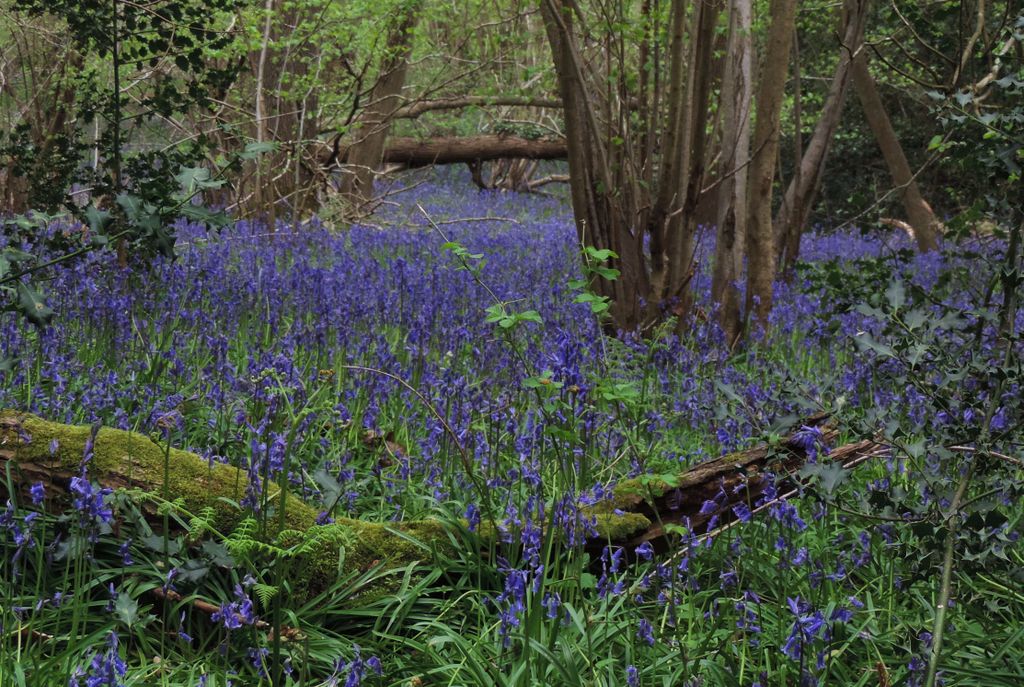
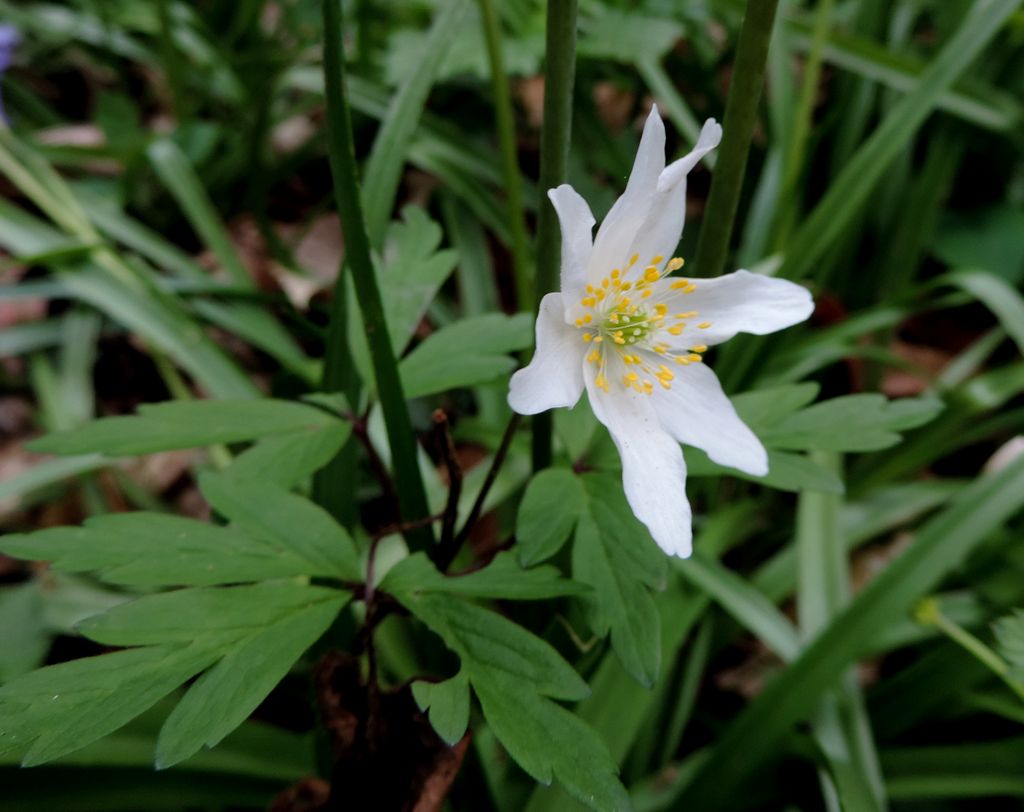
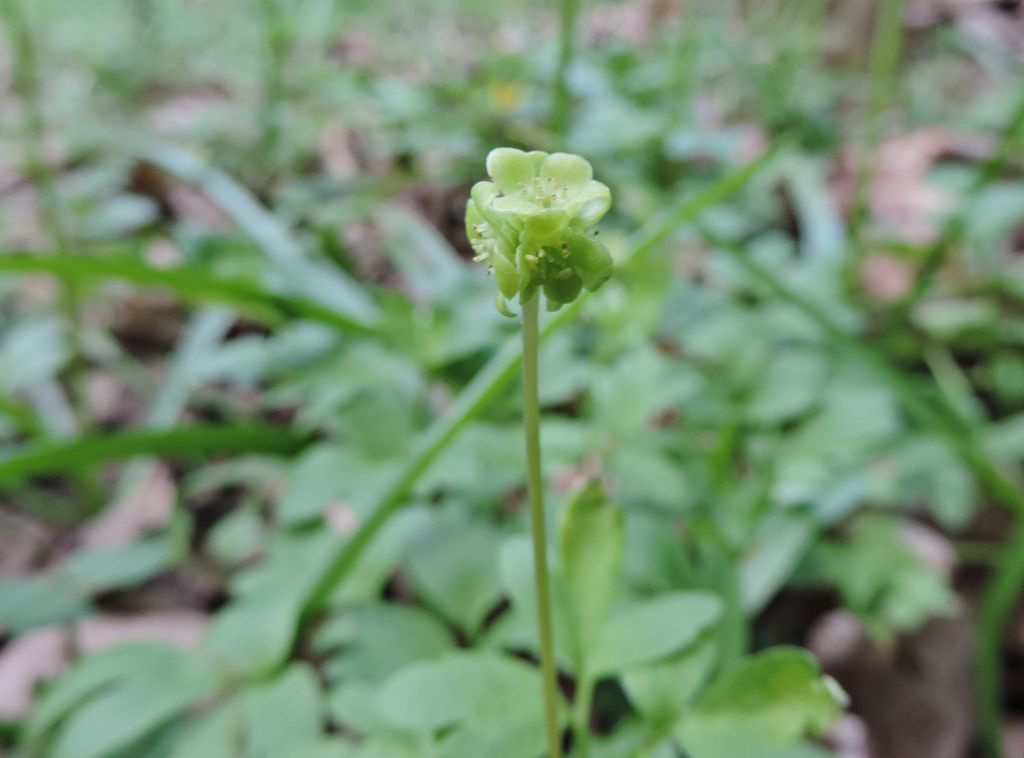
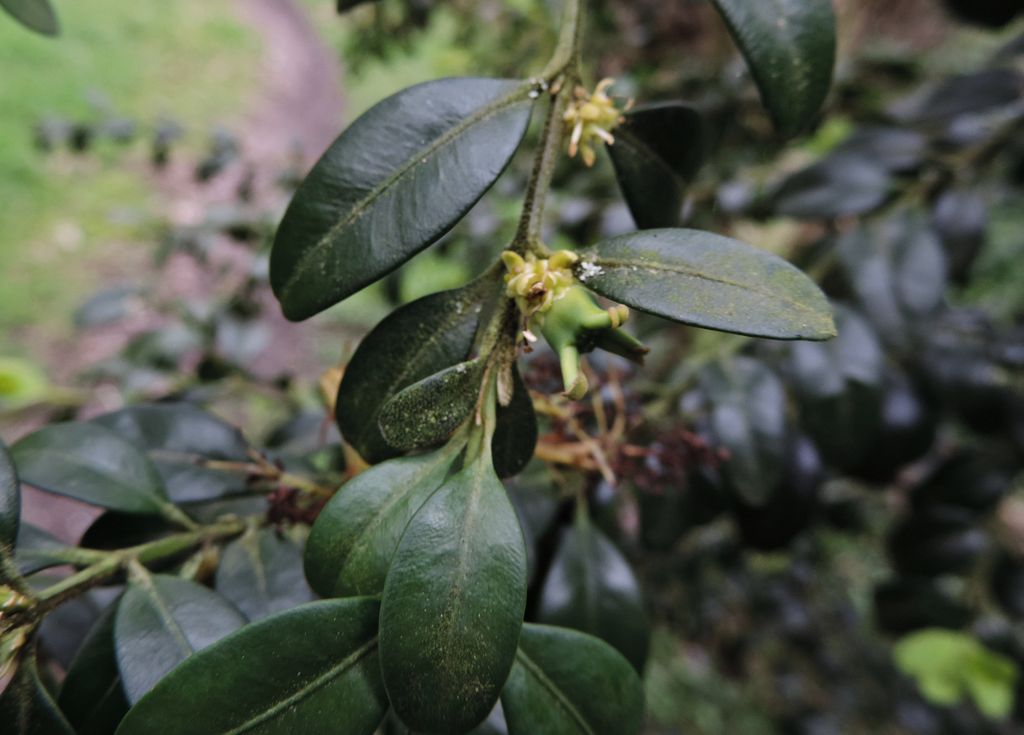
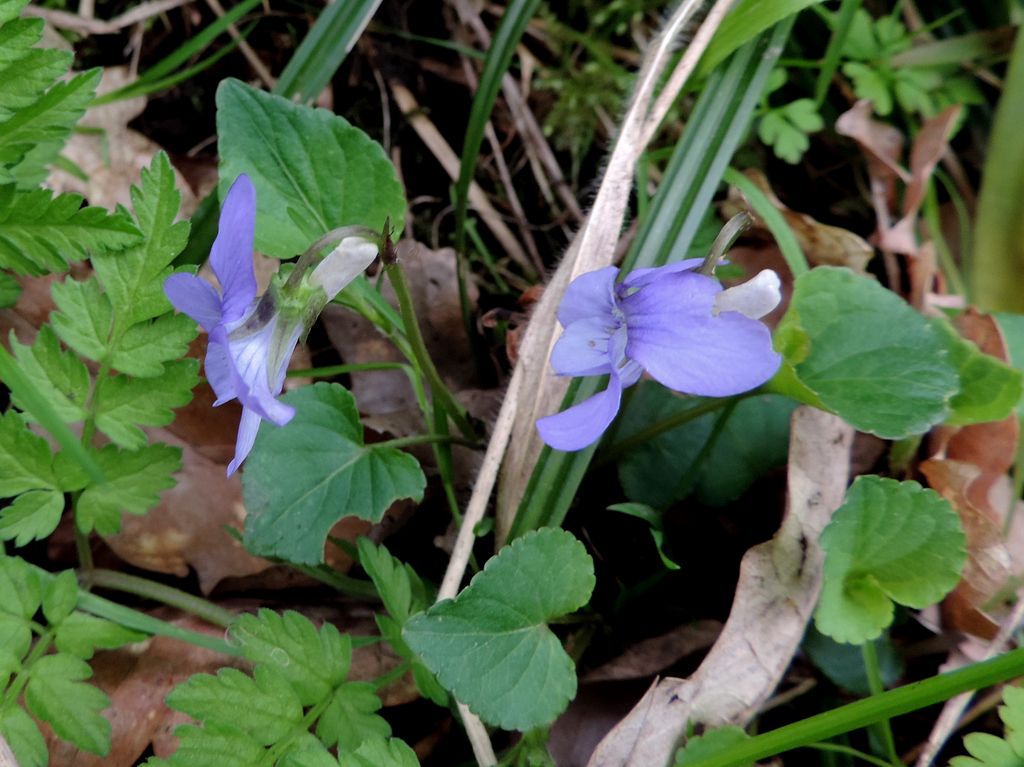
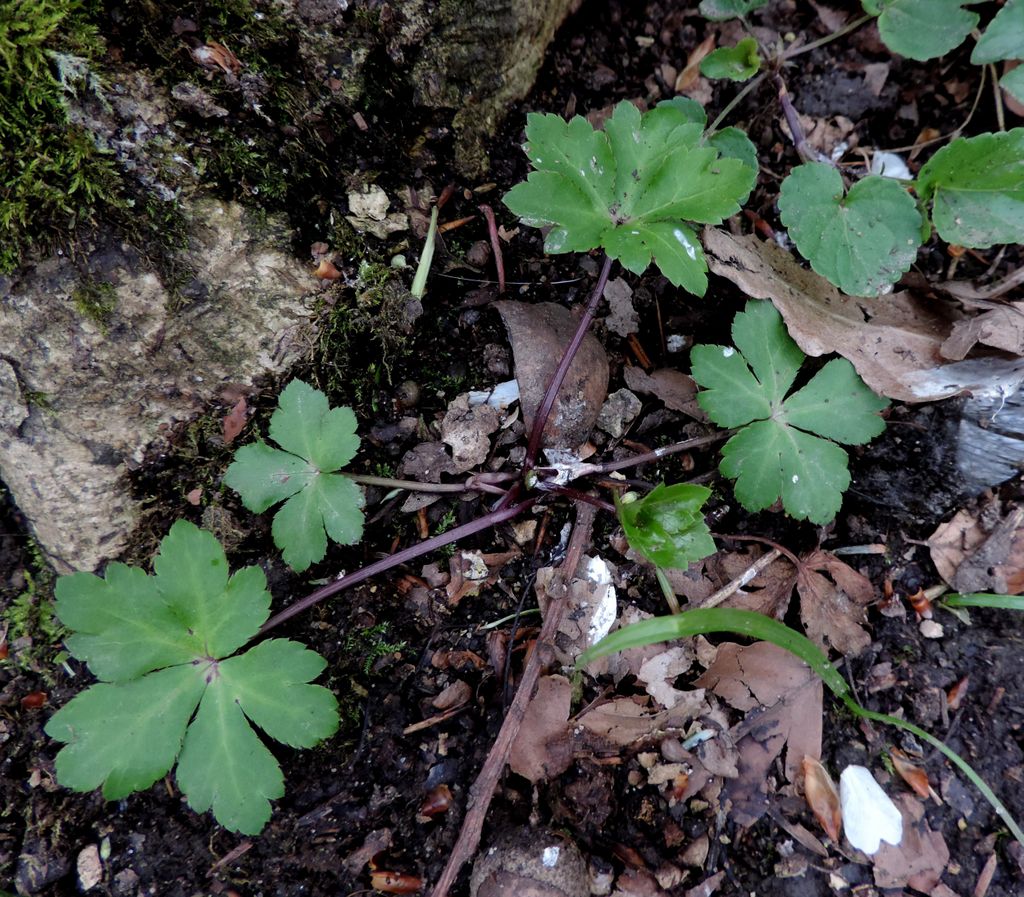
Pictures by Rob Stallard
